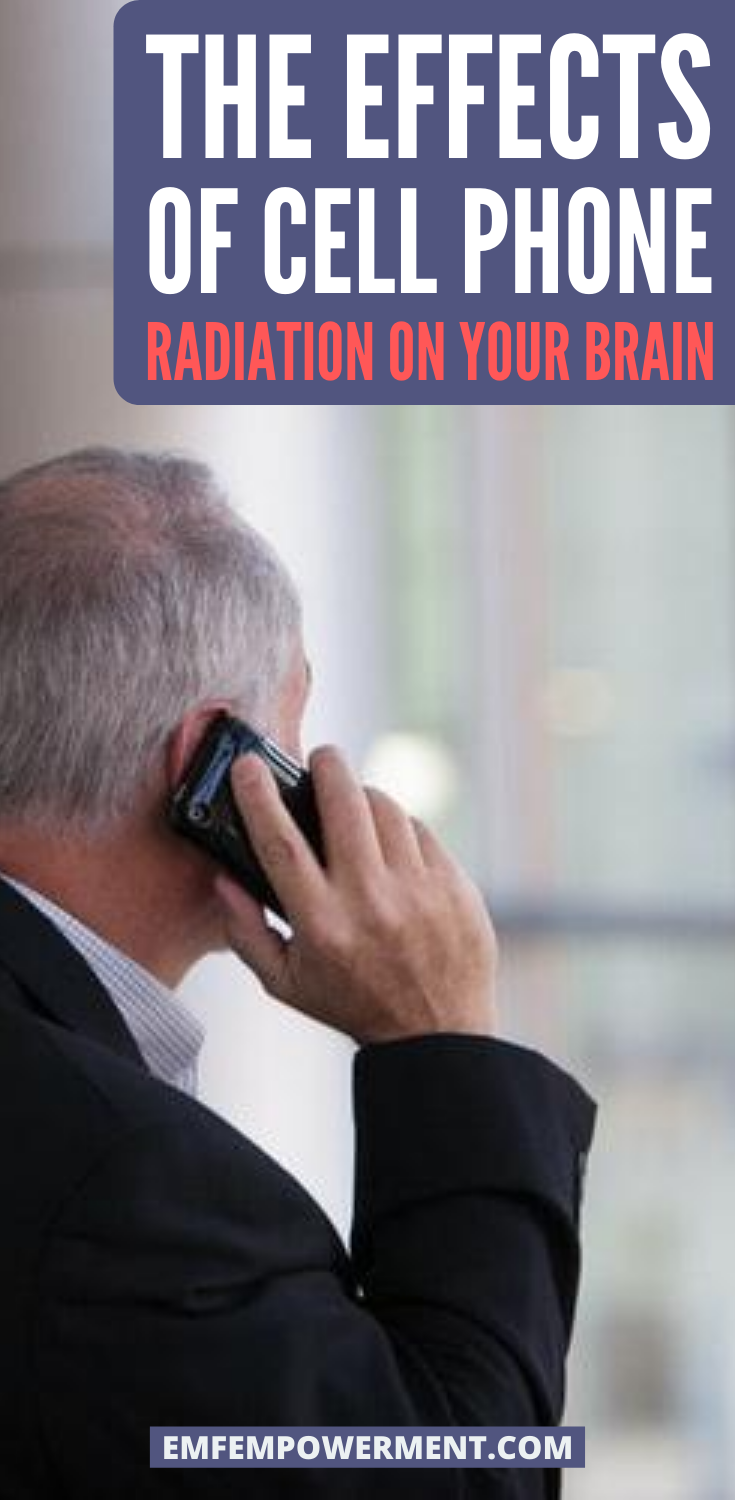Air fryers seek to deliver the decadent taste of fried food without all the grease and…
Cell Phone Radiation Effects On The Brain

*We may earn a commission for purchases made using our links. Please see our disclosure to learn more.
On April 3, 1973, the first mobile phone was created. Since then, cell phone technology has grown by leaps and bounds, and it’s been estimated that five billion people own one. With cell phone usage that widespread, it begs the question: are these devices even safe? When you make a call, you are putting the phone directly against your head. Does cell phone radiation have an effect on the brain?
In this guide, we’ll talk about the possible health effects on the brain from EMF exposure. We’ll also discuss why current scientific data doesn’t paint a full picture, and what you can do to keep yourself safe. Let’s dive in.
Cell phones and EMF radiation
Cell phones primarily produce two types of non-ionizing electromagnetic field radiation: radiofrequency (RF) and extremely-low frequency (ELF).
ELF radiation is produced simply by the device being powered on. This type of radiation is found in power lines, solar panels, and any device that uses electricity. Your phone doesn’t produce a tremendous amount of ELF-EMF radiation, but it does produce some, particularly while charging or powering on.
RF-EMF radiation, on the other hand, is generated when the device sends out radio waves to establish a connection with WiFi, Bluetooth, or the cellular network. The amount of RF-EMF radiation the device produces fluctuates based on what the phone is doing. There will likely be more produced when the phone is powered up or trying to establish a connection, and less when it is in standby mode.
Effects on the brain
Both ELF and RF-EMF radiation are recognized by the World Health Organization’s International Association for Research on Cancer as “possibly carcinogenic to humans”. This designation is based on a study linking exposure in rats to heart and brain tumors.
In the study, rats were exposed to RF radiation over their entire body for nine hours per day. There was a slight increase in the development of glioma, a rare and deadly form of brain cancer. The study itself took ten years to complete and used 2G and 3G technology, versus the 4G and 5G in widespread use today.
Glioma and brain tumors are perhaps the best known potential side effect of cell phone radiation exposure. Another study, however, found that using a cell phone can actually suppress glucose production in the brain. Researchers noticed that glucose levels were altered in the right side of the brain after a cell phone user made a phone call and held the phone to the right side of their head. The same was true for the left side. It’s unknown what the repercussions of this altered glucose production are, but it’s still an effect worth noting.
The data doesn’t tell the full story
Here’s why. A longitudinal study, which is a study that is performed over an extended period of time, takes years to complete. Cell phones, in general, have only been in widespread use for the past 20 or so years, with our usage increasing drastically in the past ten. We can’t say that cell phones will or won’t cause problems for heavy users in 20 or 30 more years, because we simply don’t know. There’s no way to cheat the passage of time in a lab, unfortunately, and the existing studies are taking into consideration the way we used phones 10 or 20 years ago. The results of those studies are not exactly relevant to the way we use our devices today.
It will be years before a conclusive answer can come out regarding the connection between cell phones and brain cancer or any other health defect.
Protecting against the effects of cell phone radiation on the brain
- Use a wired headset. Keeping distance between your brain and your cell phone is one of the best ways to lower your EMF exposure while using the device. Wired headsets are preferable to their wireless counterparts because they don’t require the use of Bluetooth. There are plenty of options out there — DefenderShield’s EMF-Free Earbud Headphones are one option that offers 100% EMF protection. For more wired headsets, see our guide to the 10 Best Air Tube Headsets of 2022.
- Invest in a protective case. EMF protection cases dampen a significant portion of the radiation emitted by your device, while still allowing a signal to pass through. While it’s still important to wear a wired headset when talking on the phone, a good case can help lower your exposure even further. DefenderShield’s EMF radiation case is FCC certified and lab-tested, providing users with nearly 100% EMF protection. For more cases, check out our guide to Cell Phone Radiation Protection.
- Consider supplements to counteract the effects on your body. No matter what precautions you take, cell phone usage still comes with risks. You can counteract some of these risks with the use of supplements. Some help boost your immune system, others fight inflammatory responses, and others may even help prevent cancer. Ginkgo Biloba, in particular, was shown to protect the brain tissue of rats from damage due to RF-EMF exposure. For more on supplements, see our guide to Anti-Radiation Herbs and Supplements.
- Keep your phone in airplane mode whenever possible. Connecting to WiFi, Bluetooth, or the cellular network produces a great deal of RF-EMF radiation. Your device produces significantly less when it doesn’t have to maintain an active connection. This can be achieved by putting the phone in airplane mode. If you aren’t actively using data, or you’re streaming something that could be downloaded instead, consider switching your phone to airplane mode.
- Don’t sleep with your phone under your pillow or on your nightstand — put it across the room. It’s common practice to sleep with your phone next to your bed. Many people use their phones as alarm clocks, and it’s simply more convenient to reach over and shut it off than it is to walk across the room. However, if your phone is within six to ten feet of your bed, you’re exposed to higher amounts of EMF radiation all over your body. If you can’t keep your phone off or in airplane mode while you sleep, your next best bet is to store the phone across the room.
How much radiation does your phone produce?
The amount of radiation produced by a cell phone varies by make and model. Manufacturers list something called the Specific Absorption Rate (SAR) levels, which tell you how much radiation the user absorbs per gram of tissue. In the United States, SAR levels are regulated by the FCC, with the legal limit set at 1.6 W/kg for cell phones. Your phone’s SAR levels are listed in the owner’s manual, and usually on the manufacturer’s website, as well.
The problem with SAR levels is that they don’t take into consideration our cumulative exposure, and they make certain assumptions about our cell phone usage. The tests are performed in conditions designed to simulate regular use, but the way we use phones is much different than it was even a decade ago.
Therefore, you may want to test your phone’s EMF output yourself. You can do this with an EMF meter — we recommend the TriField TF2, but any meter that can detect electric field, magnetic field, and radiofrequency radiation will do.
Testing your phone involves taking several measurements, both with the phone off and on. To see how much radiation your brain is exposed to while talking on the phone, place the meter directly on the device while it is powered on and try making a phone call. Watch how the levels change. Then, take the same measurement, but this time from six to ten inches away from the phone. This simulates your exposure when using the phone both with and without a wired headset.
Parting words
Cell phones are an unavoidable part of daily life, and they carry with them certain risks. Current data suggests they may be tied to gliomas and other brain tumors, and for that reason, it’s best to take steps to protect yourself when using the device. Wired headsets, protective cases, and lifestyle changes can go a long way towards lowering your risk of negative health effects. 



